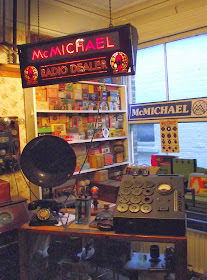
On 21 July 1403, the armies of King Henry IV and Henry Percy engaged each other about three miles north of the centre of Shrewsbury. The Battle of Shrewsbury was an exceedingly bloody one, the first occasion on which English longbow archers had fought each other, and resulted in an estimated 5,000 deaths.
The Percy family had backed Henry in his war with Richard II and had helped him to the throne in 1399. Henry, however, reneged on his promise of reward lands, and failed to provide funds to help the Percys protect the north of the kingdom. The Earl of Northumberland, with others, set out a list of grievances and demands, and his son, Henry Percy, known as Hotspur, headed south. In Cheshire he recruited experienced archers, but his army likely consisted of no more than 14,000. Hotspur's expected reinforcements, under Owain Glyndŵr, never arrived.
Henry IV was already on his way north, ironically to assist the Percys against the Scots. The king was apprised at Burton-on-Trent of the revolt of the Percys, and headed west to address the new threat, with a force estimated at anything up to 60,000. Battle was joined about a mile south of where now stands Battlefield Church.
The Cheshire bowmen inflicted much damage, and Henry's right wing broke down. Hotspur led a charge directly upon the king in an effort to capitalise upon a temporary advantage against superior force. The battle ended when it became known that he had been killed in the attempt: "...time, that takes survey of all the world, / Must have a stop" (
Henry IV, Part 1, Act V, Sc. 4).
A chantry chapel, reputed to lie above a mass grave associated with the battle, was completed in 1409. A year later this became a college of chaplains. There are remains of the fishponds that sustained the chaplains. The chapel was integrated into a larger church, completed about 1460, which itself became a parish church in 1548. Heavily restored in 1860-62, the church was declared redundant in 1982.












